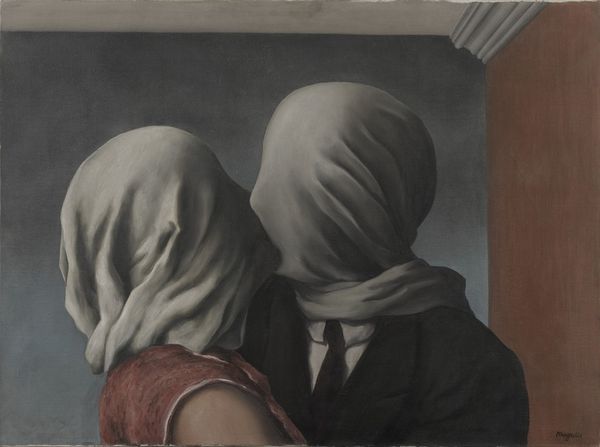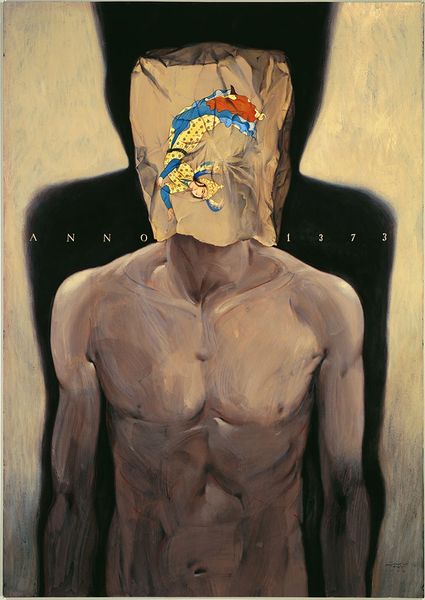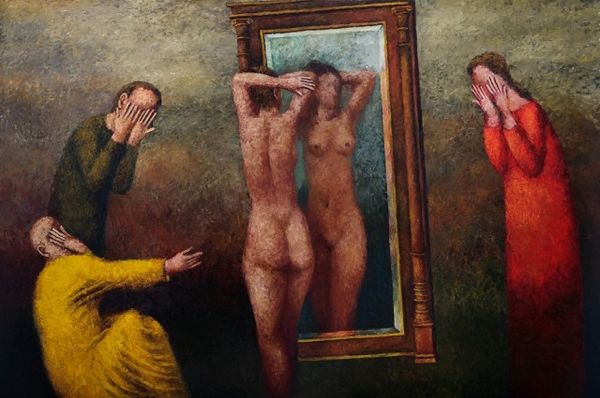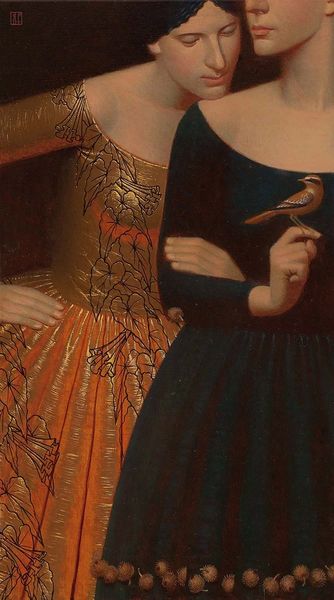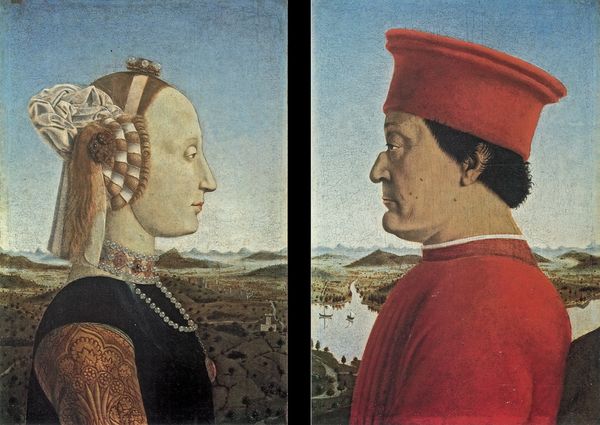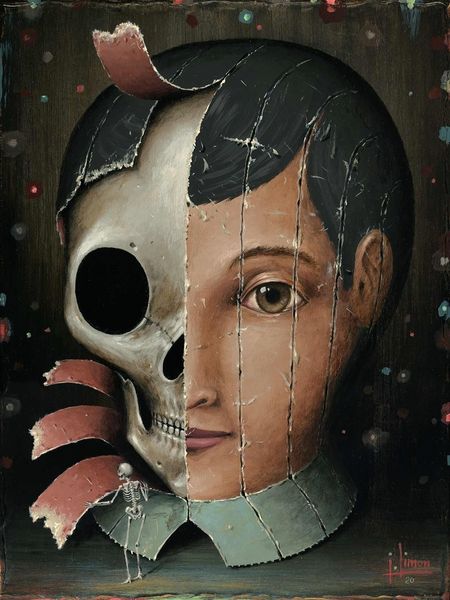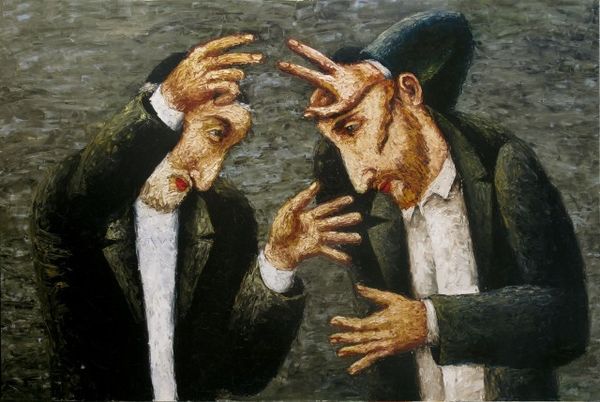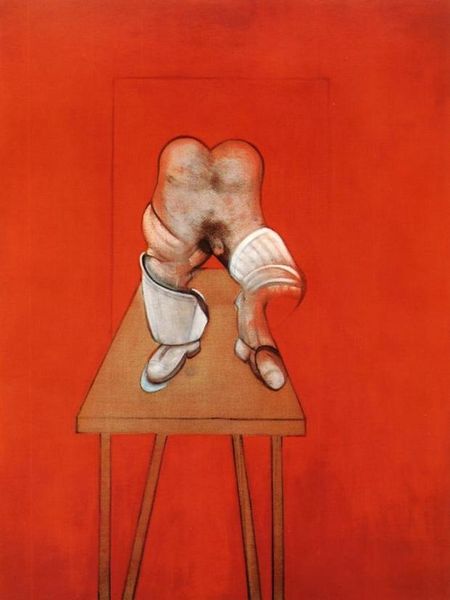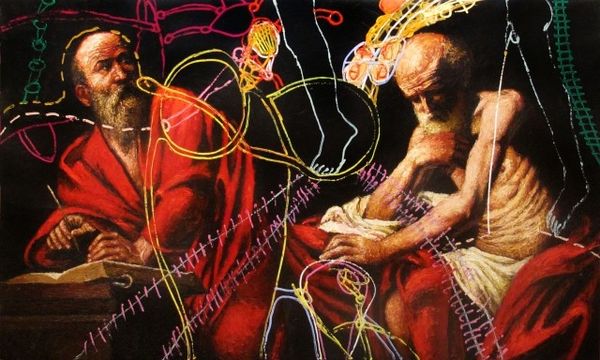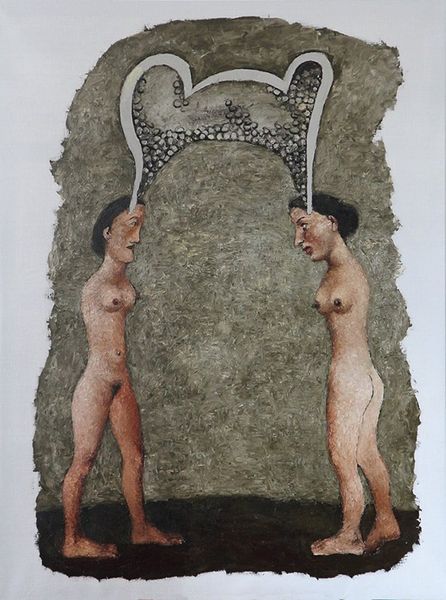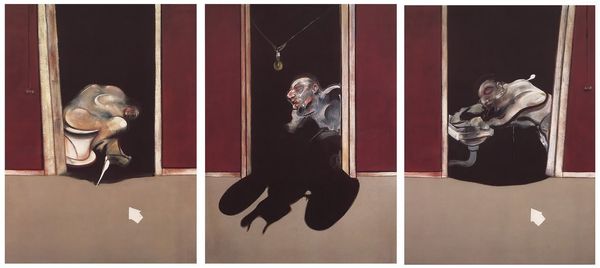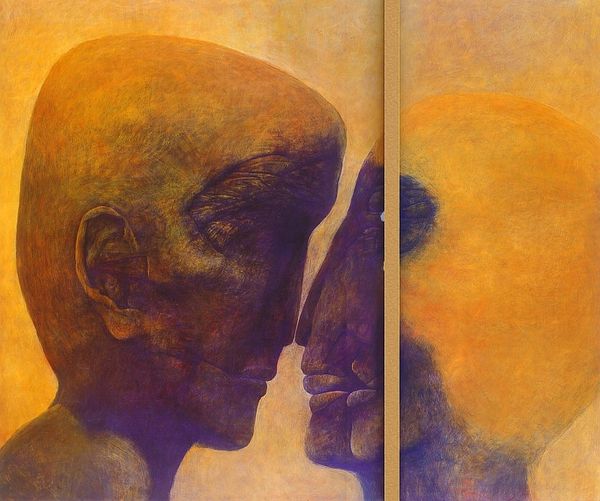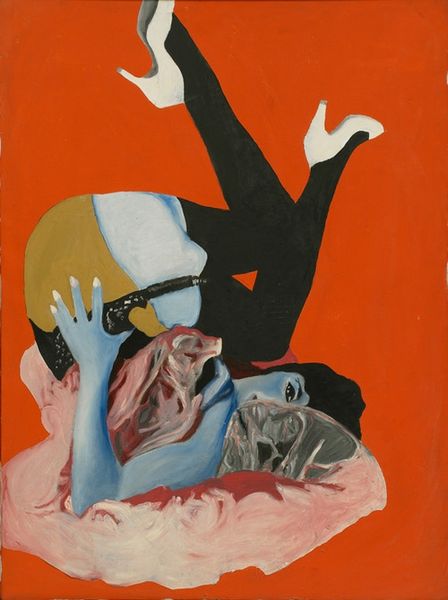
Dimensions: 56 x 76 cm
Copyright: Aydin Aghdashloo,Fair Use
Editor: Here we have Aydin Aghdashloo’s "Enigma V, Enigma VI" from 2009, oil on canvas. They strike me as haunting, almost unsettling portraits, yet there’s something undeniably captivating about them. The faceless figures are quite striking! How do you interpret this work in light of Aghdashloo’s life experiences and socio-political context? Curator: Well, first, notice the historical pastiche. Aghdashloo appropriates the visual language of Renaissance portraiture—the somber colors, the formal composition—only to disrupt it with the absence of the face. Given Aghdashloo’s experiences as an artist in Iran, particularly during periods of censorship and upheaval, I wonder, might these obscured faces be a commentary on suppressed identity? Editor: That's a really interesting point! It’s like the figures are stripped of their individuality, or maybe hiding their true selves. But why the coins, prominently displayed? Curator: Indeed. The coins held by each figure also reference the past and suggest ideas around value and legacy. Do you think the facelessness could also reflect the commodification of identity, particularly within institutional or political structures that might dictate how one is "seen"? Or not seen? Editor: Hmm, the "Enigma" title adds another layer. Are they mysteries because we can’t see their faces, or because their true identities are obscured by external forces, like the government? Curator: Precisely. And consider where such art is displayed, who sees it and what dialogues emerge, compared to who cannot. It encourages conversations around art's purpose in bearing witness, questioning authority, and the politics of displaying art and history. Editor: It's fascinating how one painting can reveal so much about art as a witness. I never thought of portraits and how the museum space itself is deeply entrenched in sociopolitical dialogue, a concept central to grasping art’s value. Curator: Exactly. The socio-political influences profoundly changed our views of its historical pastiche and meaning, didn’t they?
Comments
No comments
Be the first to comment and join the conversation on the ultimate creative platform.
